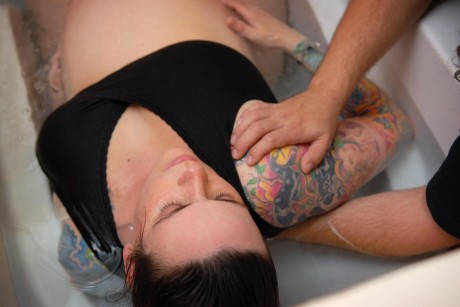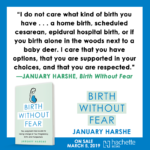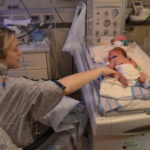
I was reading this story and came across more information about cesarean sections. Natural birth advocates talk about the number of surgical births being too high, but what does that mean? Why do we care?
To quote from this article:
“C-section or caesarean section risks are roughly fewer than 1 in 2,500, significantly more than the one in 10,000 risks for vaginal birth.”
“About 36 women per 100,000 die while undergoing a Caesarean section, or C-section, compared with 9.2 deaths per 100,000 vaginal deliveries, according to a published study in the Journal of Obstetrics and Gynecology.”
Wait. That is from the Journal of Obstetrics and Gynecology? 9.2 to 36 is an 291.3% increase. That is a huge difference that even made me question the validity of such a claim. I am not a math whiz, but this seemed too high. I decided to dig a little further.
This article from AJOG (The American Journal of Obstetrics and Gynecology) collected data from 1.5 million deliveries between 2000 and 2006. They found the following:
“Ninety-five maternal deaths occurred in 1,461,270 pregnancies (6.5 per 100,000 pregnancies.) Leading causes of death were complications of preeclampsia, pulmonary thromboembolism, amniotic fluid embolism, obstetric hemorrhage, and cardiac disease. Only 1 death was seen from placenta accreta. Twenty-seven deaths (28%) were deemed preventable (17 by actions of health care personnel and 10 by actions of non-health care personnel). The rate of maternal death causally related to mode of delivery was 0.2 per 100,000 for vaginal birth and 2.2 per 100,0000 for cesarean delivery, suggesting that the number of annual deaths resulting causally from cesarean delivery in the United States is about 20.”
Well, that’s not 36 per 100,000! That is quite a jump though from o.2 per 100,000 to 2.2 per 100,000 The numbers are smaller, but that is a 1000% increase/difference!
This Discussion on the issue (and study) by 6 M.D.’s revealed some interesting information. I will highlight a few points. Please see the article for more information and findings.
“Patients might be shocked to learn that women in the United States still die in childbirth. Fortunately, this is a rare event. An important aspect was the potential contribution of cesarean delivery to the maternal mortality rate, especially when we consider the trend toward elective cesarean delivery. Clark et al tapped a large database from the Hospital Corporation of America to examine maternal deaths that occurred among close to 1.5 million deliveries. Their findings sparked a lively conversation.”
“When we counsel patients about cesarean delivery, we should always describe risks and benefits. Risks typically should include surgical complications such as bleeding, infection, and damage to internal structures. It has been my experience that the catch phrase “increased risk of death” is included uniformly, but I personally find it somewhat difficult to pin down this risk in exact terms and numbers. It can also be somewhat difficult to describe to patients exactly why they might be at risk for dying. For that reason, the new study by Clark et al was a very interesting read.”
“The authors’ observed maternal mortality rate was 6.3/100,000 over a 6-year time period, which is approximately 50% lower than the Centers for Disease Control and Prevention’s reported national rate of 13/100,000 for 2006. Their lower rates may have reflected the disproportionate number of private hospitals that were included in the study sample. Cesarean delivery rates in the study were comparable with national rates, nearing 31%.”
“An important fact is that the maternal mortality rate in this country is actually climbing, which is a more recent trend. Somewhat surprisingly, this study found a mortality rate that was roughly 50% of the reported national rate.”
In this UK study, they found:
“The case fatality rate for all caesarean sections is six times that for vaginal delivery, and even for elective caesarean section the rate is almost three times as great. These differences are highly significant. In the absence of other evidence (eg, from randomised controlled trials of different modes of delivery), it is not appropriate to be dogmatic about best practice, but any decision to undertake major surgery with an associated mortality should be taken very seriously by all concerned.”
Concluding thoughts…
The numbers you get completely depends on which studies, abstracts and information you are looking at.
From what I found on AJOG, the mortality rates for women does increase in cesarean sections (which more women are asking for as a choice, not for medical reasons), but not as much as the original article claimed. It was however, an 1100% difference from vaginal birth vs. cesarean according to the study I did find.
In the UK Study, maternal death rates were 3 times greater with planned, elective cesareans than vaginal births.
Also, maternal deaths in birth is rare, but rising and at 6.3 per 100,000 (CDC says 13 per 100.000).
Main risks for cesarean section include surgical complications such as bleeding, infection, and damage to internal structures.
I’ve been trying to find a way to say that the increased risk is in fact not too much higher, but it is. In comparing VBAC’s (uterine rupture rates, not death), it is .07 for all women vs. apx .5% for VBACs which is a 614.3% increase chance of rupture (again, not death). Where it is an 1000% increase risk of death for cesarean vs. vaginal birth.
In the UK they found the case fatality rate for all caesarean sections is six times that for vaginal delivery, and even for elective caesarean section the rate is almost three times as great. These differences are highly significant. In the absence of other evidence (eg, from randomised controlled trials of different modes of delivery), it is not appropriate to be dogmatic about best practice, but any decision to undertake major surgery with an associated mortality should be taken very seriously by all concerned.
In the end, we are dealing with small numbers of .07, 0.2, 0.5 and 2.0 percents. That means 98-99+% of the time, birth happens without complications!!! Do your research, birth how you feel is best for you and find a competent and supportive midwife or OB to reduce risks either way.
* Percent increases found using this tool.











6 Comments
serenity
Thanks so much for this! I have been wanting data that compares c-section and vbac risk. It has always seem riskier too me to undergo surgery than to even try and birth naturally. Wish I had this info four years ago! Never would have consented to the first, let alone second.
Kelli
Thank you for doing the research on these numbers and writing this post. For me VBAC has always seemed a “given” choice personally. How could vaginal birth in general be more risky with a 0.7% rupture rate (similar to that of pitocin induction) than c-section which is surgery? This is just from thinking about it with my mama brain (which in most cases I’ve learned should be listened to more often) than my childbirth educator/doula brain. I can’t imagine how the once a c-section rule is still being promoted with such an increase in risk. Baffling.
Michelle
I wonder how many deaths are reported when you combine often unnecessary interventions (cytotec, cervadil, pitocin, epidurals) with C-sections.
Adrianne
This is a great source of information and very well documented. Thank you so much!
kim
I have had two c sections an my doc says its safest for me to have another for my third baby due in two months i really really dont want another cesearan but im feeling like its the only way my baby will get here safe so my question is do you think its riskier to attempt a vaginal birth after two c sections or to go for a third c section?
Kelly
Thanks for this. I have twins, and the presenting one is breech, and I found a provider who’ll deliver a breech twin A, but my husband is convinced we’re all going to die unless I have a c-section. Ridiculous. I refuse. I’ll be showing him this page if he keeps worrying.